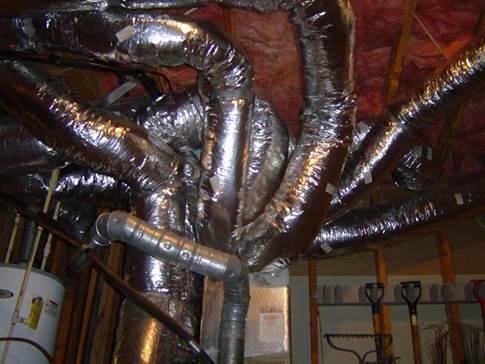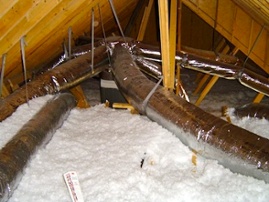
When talking about energy efficiency, one needs to be careful to not spend too much time discussing California – because people not from California DO NOT WANT TO HEAR ABOUT IT! (yes, they shout) However, the rest of the nation can use lessons learned from bleeding edge policy, and even research, in California.
Whenever I visit California I think, “What else does this state have for EE opportunities? They have been running aggressive programs for eons. Haven’t they done everything yet?”
Heck no. They suffer the same widget focused, human boondoggled programming the rest of us have. What do I mean by human boondoggled? Terrible application of energy efficient technologies, but not just applications of energy efficiency, applications of stupid stuff that everyone assumes is hunky dory. It turns out residential buildings, specifically single-family homes, are as prone to energy waste as are commercial and industrial buildings. This is not because heating, cooling, appliances, and lighting equipment are inefficient. NO! It is because buildings are built according to a word I like to use sparingly in the rant: Crap!
I know folks from a California firm not unlike Michaels Energy, except they operate in the residential space, and we are in the commercial and industrial spaces. They are highly competent and have excellent technical and analytical capability.
They are close to wrapping up a years-long study of four homes, each built in a different decade: 1940s, 1950s, 1990s, and 2000s. These homes reside in the central valley where it generally rains in the winter and is hot and dry without fail in the summer. I received a draft edition of the report, and I will provide a link once it is finalized.
The cooling savings potential in these homes is 35-75%, measured.
To digress for a second, the draft report begins by describing how terrible building simulations are for projecting savings in existing homes: “current energy calculation tools have an abysmal record at estimating the energy use and energy efficiency of older homes”. This is true, and it is also true for commercial buildings. Reason: simulations include perfect installation and controls responses that work. Reality: hahahahahahahaha. Never.
So, the geniuses who set up this study leased these four homes to remove any occupant effects. They even installed secondary, “reference” HVAC systems that were completely independent of the installed systems, to gage the impacts of the envelope measures versus the HVAC upgrades to the in situ systems that were also upgraded. They also demonstrated savings with having the entire reference systems in the conditioned space – the “holy grail”. And they alternated existing and reference systems every two days, monitoring the heck out of all key parameters.
The 1940s home featured foil for insulation in walls and attic; not foil-faced batt insulation but more like foil lined paper that wraps a hot dog or burger. The ductwork, as with all these homes, ran through the attic – bad idea. It had a fireplace with a brick chimney with a gap between the chimney and ceiling you could throw a cat through (no offense, cat people). The 1940s and 1950s homes had greenhouse windows – single pain, metal frame, no treatment.
The 1940s house was tiny, and so they were able to install new ductwork above a drop ceiling in the hallway and reduced duct leakage from 100 cfm to zero. That is a minimum of 10% cooling savings. Envelope improvements cut infiltration by 60% per standard blower door test. The HVAC air flow increased by over 100% while the fan power dropped by 75%. How so, engineers would ask? Fan static pressure dropped by three quarters, and a new fan motor was installed. They also replaced a 2.5 ton air conditioning compressor with a 1.0 ton compressor. Total envelope and HVAC costs: about $15,000. The savings are roughly $1500 per year.
The newer homes were slightly less wasteful. Measures were similar, as were the savings, except the 2006 home had “only” about half the savings potential at a measly 35% or so.


A few other highlights:
The 1950s home features a “can of worms” ductwork system as shown in the photo nearby. Back in April’s post, Duct Leakage; The Results Are In, this is not what I was talking about. When I look at this, I’m thinking, the air flow is at best half of what it should be. The pressure in the ductwork is excessively high resulting in extra leaks to the unconditioned attic space (wasted).
In fact, the next photo shows ductwork in the 2006 home. It too uses this lousy flex duct. When it comes to energy waste, you might as well open the back door and leave it wide open when flex duct is used almost exclusively.
When I hear flex duct, I think, lazy, Yugo, and lawn chairs from K-Mart. This is what one gets with a low-ball, cheap, and crappy contractor. Put it above the ceiling, demonstrate some cool air coming out of the diffuser, and get the heck out of there.
Know how much flex duct is in my house? Zero point zero lineal feet. Think of it this way: plumbing by garden hose versus soldered copper pipe. The analogy is right on target.
